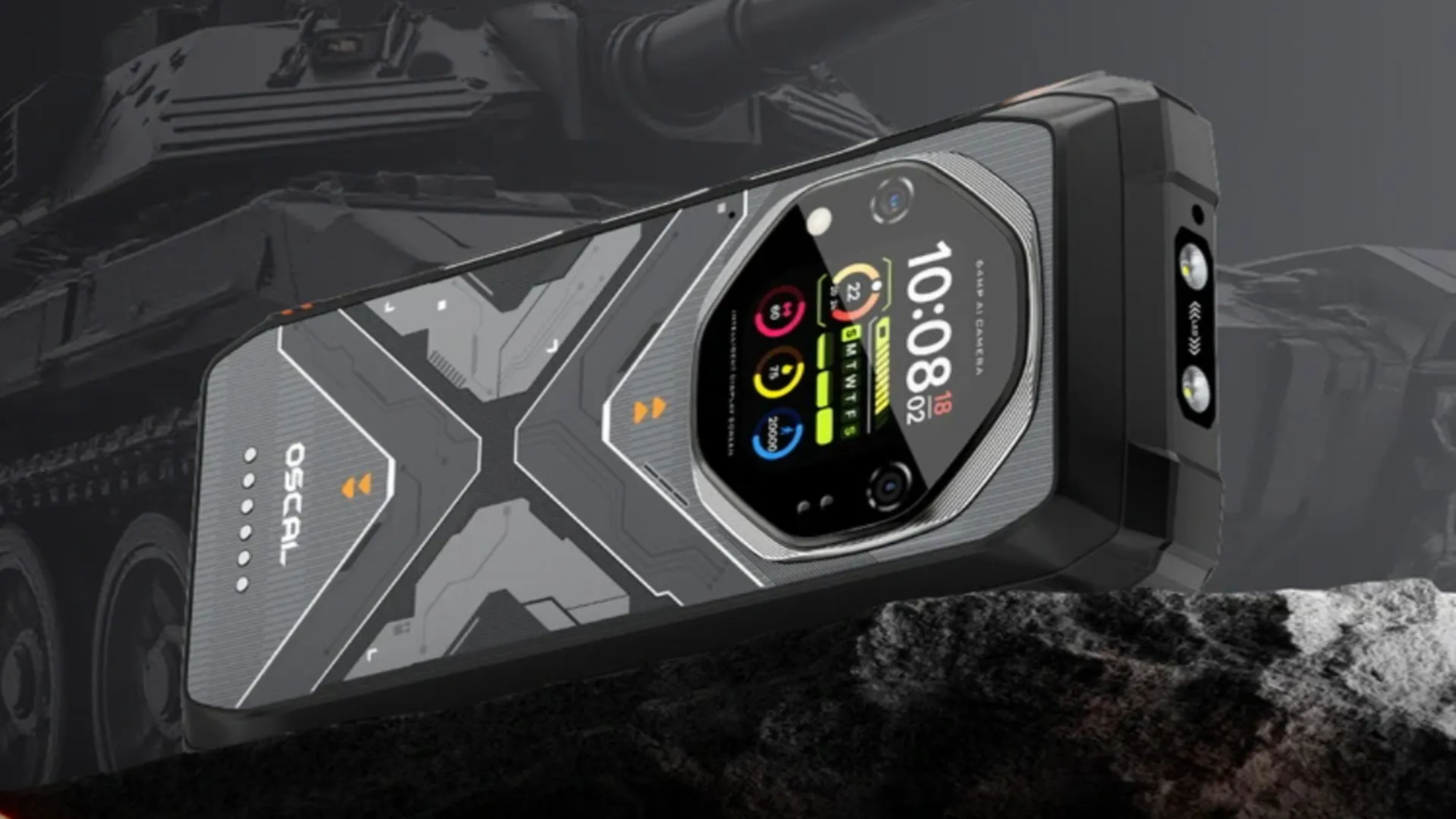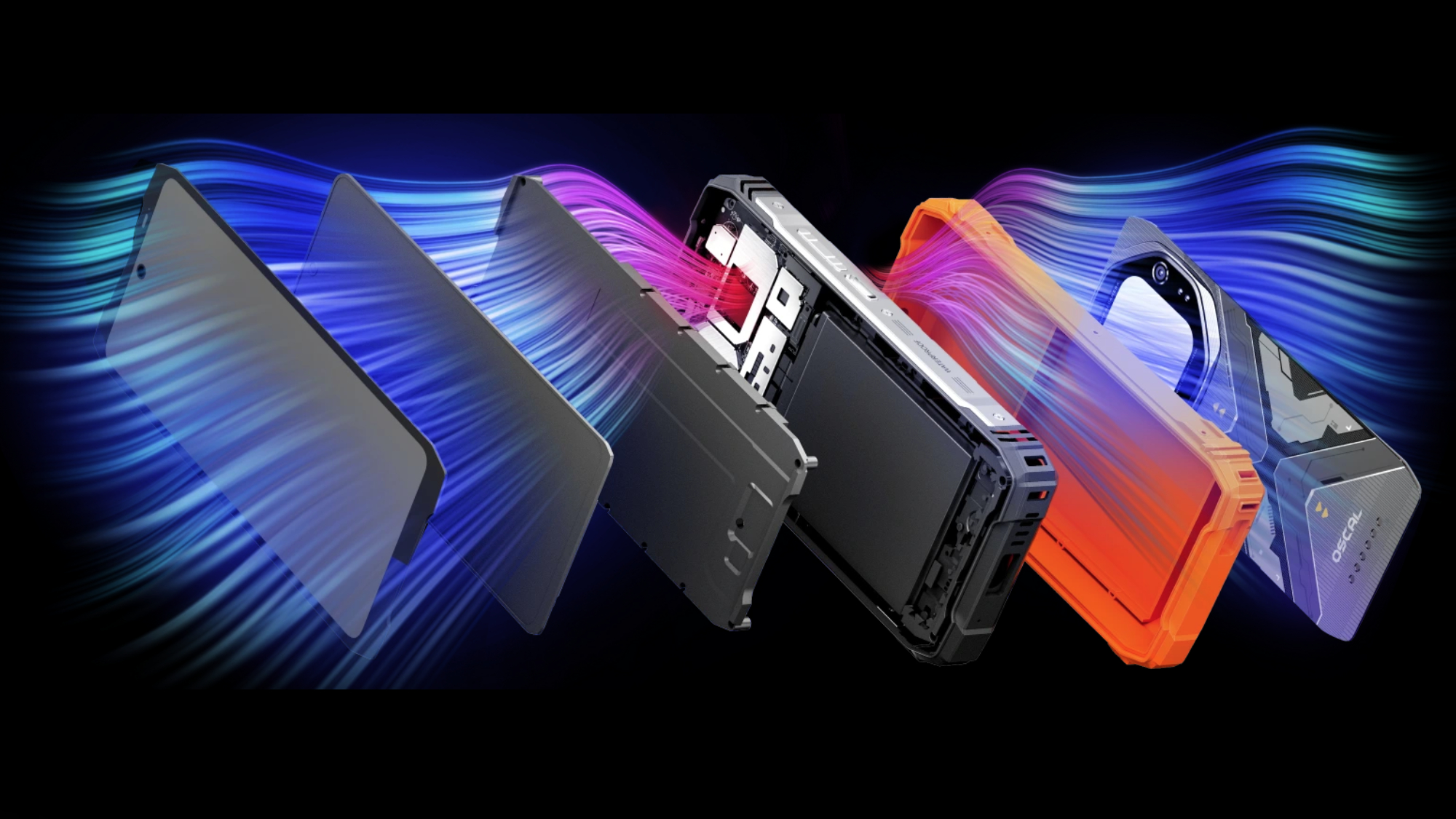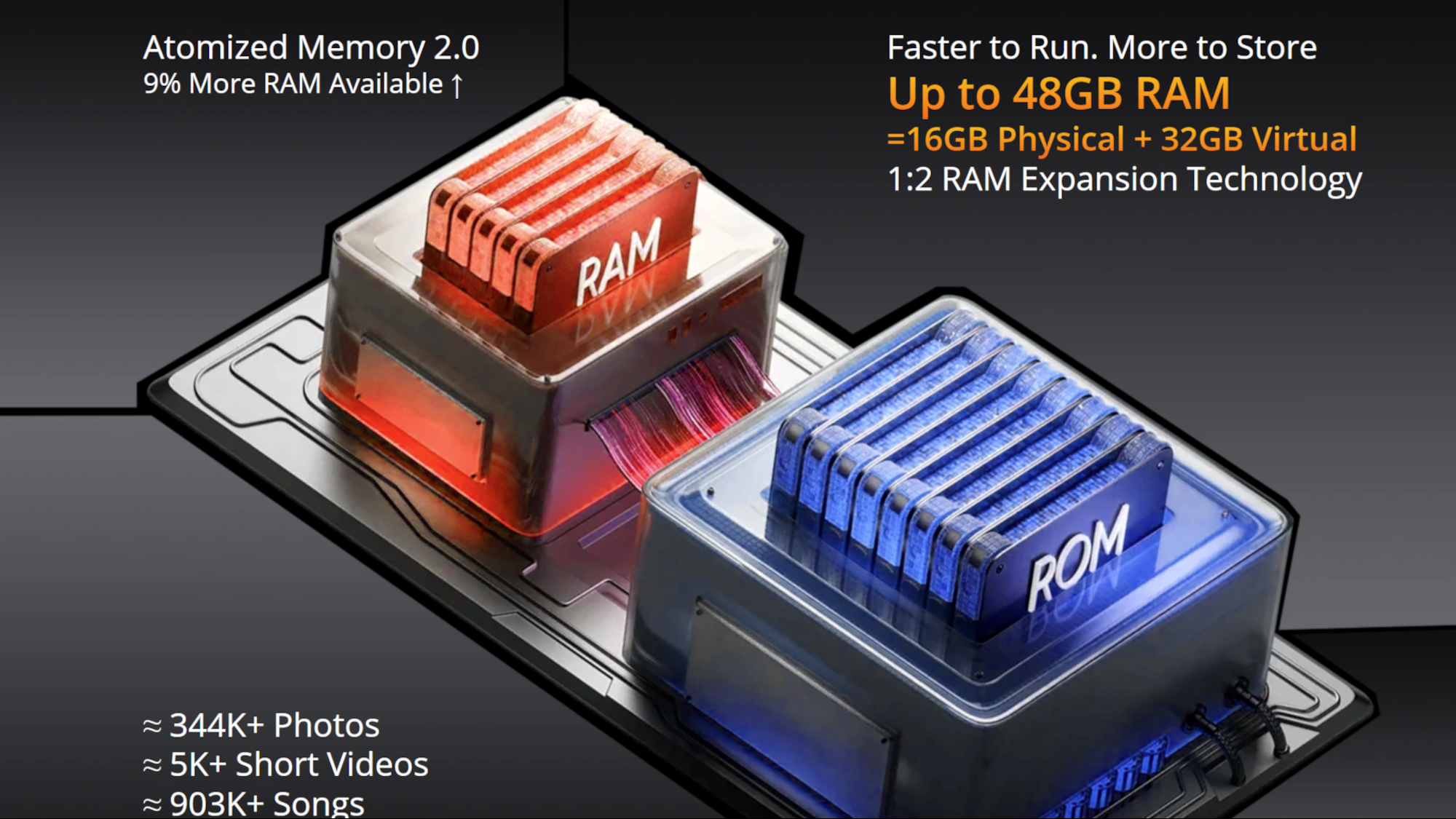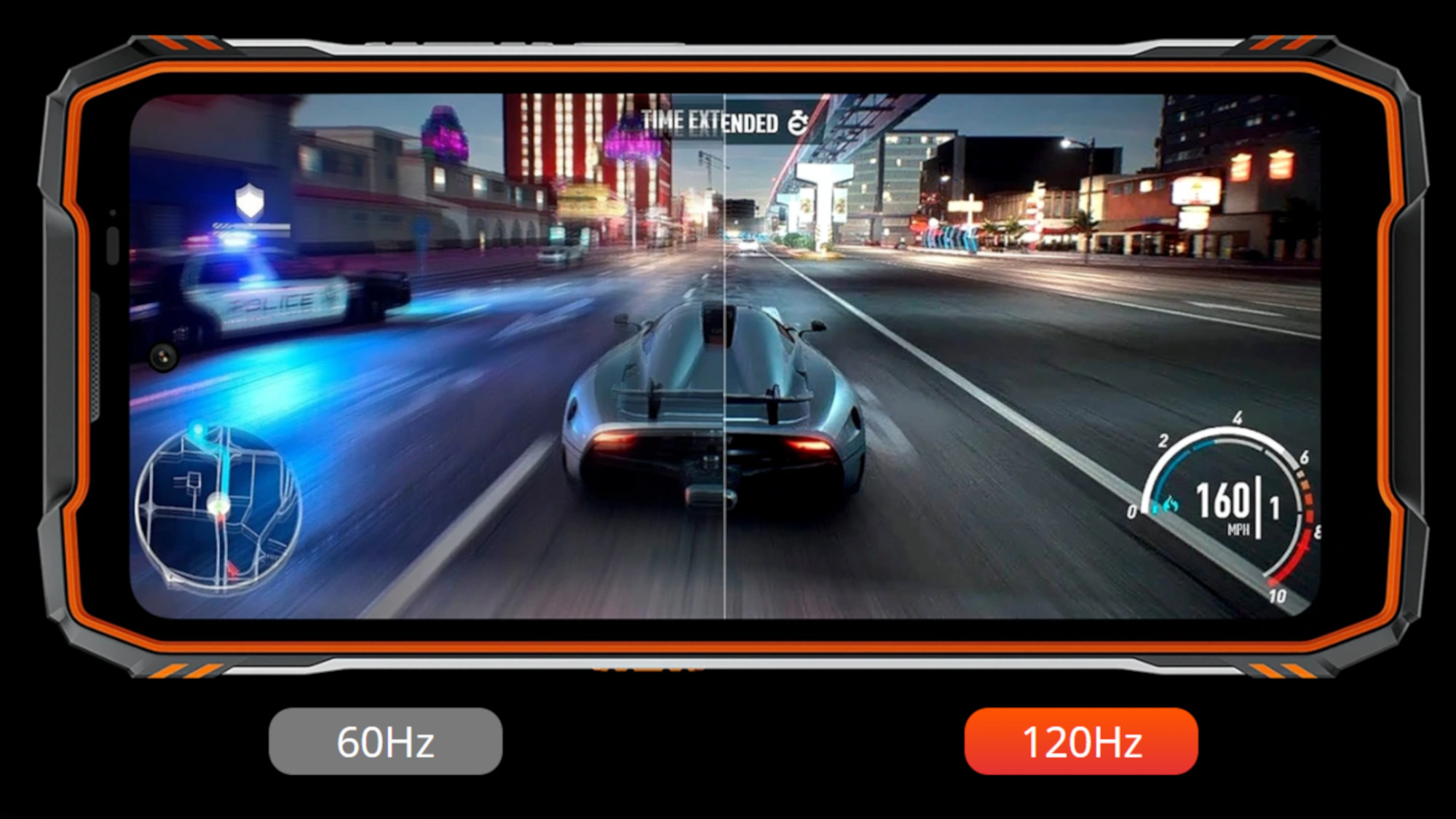This phone has a 20,000mAh battery and 48GB of 'virtual RAM' — here's what that means

The best smartphones on the market may be very nice to look at, but they're not always the most durable. That's where rugged phones come in, which pride themselves on being tough, but don't always have the most power. However, the most recent device from the Chinese brand Oscal promises an unprecedented level of performance.
According to the company, the Oscal Tank 1 uses a multi-layer design to reach a military level of durability. This includes an aerospace-grade alloy frame, high-strength composite back cover and a display protected by Corning Gorilla Glass 5. According to Oscal, the phone can withstand 1,200kg of pressure, survive 10m free-falls and 1.5-meter “death-broke drops.”

The Oscal Tank 1 features a 6.78-inch, 2.4K main display as well as a 2.01-inch secondary display on the back of the phone. This secondary screen can show real-time updates, such as alarms and phone calls, as well as other essential tools.
When it comes to photos, the phone has a 64MP main camera, a 50MP selfie camera and a 20MP night vision camera. All of this is powered by the Dimensity 7050 chip and a truly staggering 20,000mAh battery with 55W wired fast charging, which would exceed many of the longest-lasting phones.
However, what has really caught people's attention is the listed 48GB of RAM, which would exceed even some of the best laptops. This amount of RAM would certainly help the full suite of AI features listed for the phone, including DeepSeek-R1, ChatGPT and Google Gemini.
48GB of RAM is amazing, but is it a little too good to be true?

The reality is that the Oscal Tank 1 doesn't exactly have 48GB of RAM, at least not physically. Instead, the phone comes with either 12 or 16GB of physical RAM, but can reach as much as 48GB by using what is known as virtual RAM.
What this means is that the phone can take a portion of your phone’s internal memory and have that act as extra RAM when needed. This extra RAM is then used for background apps, allowing the physical RAM to focus on whatever is currently on screen. In concept, this helps a device to avoid slowdowns while running multiple intensive programs.
Get instant access to breaking news, the hottest reviews, great deals and helpful tips.
However, there are a couple of drawbacks when using virtual RAM over physical RAM. Firstly, storage is noticeably slower at both reading and writing data, meaning that your phone might list 48GB of RAM, but won't see a massive boost in speed. Secondly, using your storage like this can introduce more read/write cycles, which can negatively affect its long-term health.

I also have some concerns about the display, primarily that it only offers 700 nits of brightness. Now, 700 nits is more than enough if you’re inside, or at least in the shade. However, in direct sunlight, it’s lacking, especially as phones like the iPhone 17 Pro Max offer as much as 3,000 nits.
The Oscal Tank 1 is scheduled for release on October 20, with the phone being priced at €379.99 for the 12GB + 256GB model and €399.99 for the 16GB + 512GB variant. Let us know if all the listed features would make this the rugged phone for you, or if you are looking for something a little different in your durable device.
Follow Tom's Guide on Google News and add us as a preferred source to get our up-to-date news, analysis, and reviews in your feeds. Make sure to click the Follow button!
More from Tom's Guide
- I just discovered what’s really draining your iPhone battery — and it’s not what you think
- Google Pixel 10 users are reporting mysterious app crashes - here's what we know
- Samsung Galaxy Z Tri-Fold may get a wider release after all — here's what we know

Josh is a staff writer for Tom's Guide and is based in the UK. He has worked for several publications but now works primarily on mobile phones. Outside of phones, he has a passion for video games, novels, and Warhammer.
You must confirm your public display name before commenting
Please logout and then login again, you will then be prompted to enter your display name.
